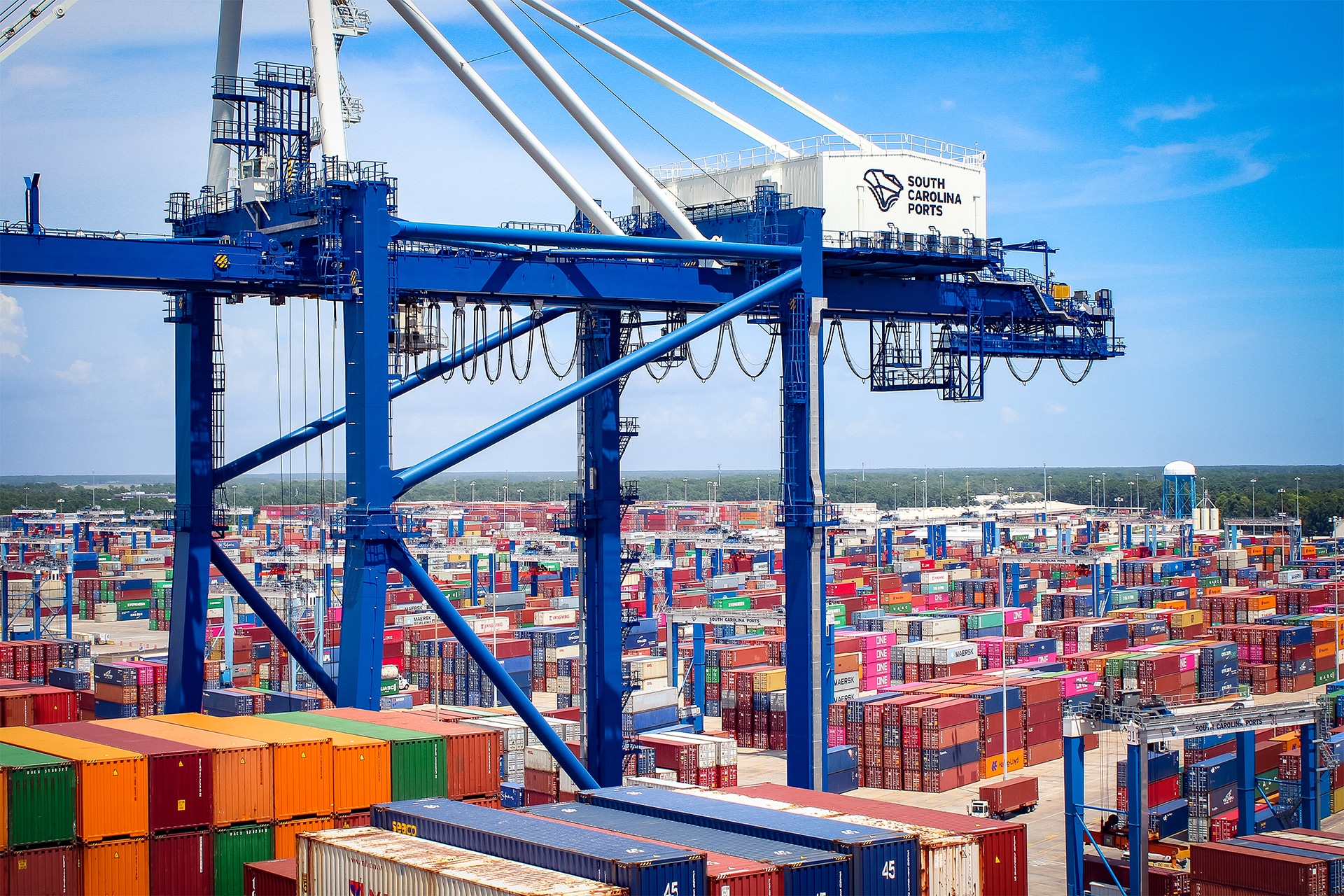Cargo figures and strong Black Friday weekend sales suggest that retailers and consumers will keep going strong through the holiday season’s end, according to the National Retail Federation.
Inbound cargo volume at the nation’s major container ports should continue to slow in the final weeks of 2023 but only after reaching a peak later than expected this fall, according to the Global Port Tracker report released by the NRF and Hackett Associates. Ports tracked in the United States handled a higher-than-expected 2.05 million twenty-foot equivalent units, one 20-foot container or its equivalent, in October, the latest month for which final numbers are available. That was up 1.3% from September and 2.5% from October 2022 for the first year-over-year increase since June of last year. By exceeding September’s 2.03 million TEU, October appears to represent the peak of the holiday shipping season, NRF indicated. With 1.96 million TEU moved, observers expected August to be the peak shipping month.
From an historical perspective, NRF pointed out, October is the typical peak import month but the acme shifted to August or sooner for seven of the past 10 years after port labor disputes prompted retailers to bring merchandise through U.S. ports early and avoid any disruptions that might affect the holiday season.
Ports haven’t reported November numbers yet, but Global Port Tracker projected the month at 1.96 million TEU, up 10.5% year over year. December is forecast at 1.93 million TEU, up 11.5% year over year. If realized, the numbers would bring 2023 to 22.4 million TEU, down 12.4% year over year. Imports during 2022 totaled 25.5 million TEU, down 1.2% from 2021’s record total of 25.8 million TEU.
For 2024, NRF noted, indications are that monthly volume growth will continue, with the January forecast at 1.93 million TEU, up 6.6% year over year. The forecast for February, historically the slowest month because of Lunar New Year factory shutdowns in Asia, is for 1.77 million TEU, up 14.5% year over year, with March at 1.75 million TEU, up 7.7% year over year, and April at 1.8 million TEU, up 1% year over year.
“We originally thought peak season would come in August, but imports kept growing in September and again in October,” said Jonathan Gold, NRF vice president for supply chain and customs policy. “Whether it was merchandise for retailers or cargo for other businesses, that’s a good sign for the economy and for the holiday shopping season. NRF expects record-setting holiday sales this year and retailers are well-stocked to meet consumer demand.”
Hackett Associates founder Ben Hackett, referring to solid Black Friday weekend sales, said strong corporate profits and continued growth of gross domestic product indicate the U.S. economy is poised to advance in the immediate future.
“The U.S. economy appears to be on a sustainable growth path as consumer demand remains buoyant,” Hackett said. “It would be natural to assume that any thought of a recession is behind us, but a significant number of economists and politicians remain skeptical. As always, time will tell.”
Global Port Tracker, produced for NRF by Hackett Associates, provides historical data and forecasts for the U.S. ports of Los Angeles/Long Beach, Oakland, Seattle and Tacoma on the West Coast, New York/New Jersey, Port of Virginia, Charleston, Savannah, Port Everglades, Miami and Jacksonville on the East Coast, and Houston on the Gulf Coast. NRF has forecast a 2023 holiday sales increase of between 3% and 4% versus 2022, in line with pre-pandemic growth rates, which would produce a record-setting total between $957.3 billion and $966.6 billion.





